new posts in all blogs
Viewing: Blog Posts Tagged with: Sunday Funnies, Most Recent at Top [Help]
Results 1 - 25 of 28
How to use this Page
You are viewing the most recent posts tagged with the words: Sunday Funnies in the JacketFlap blog reader. What is a tag? Think of a tag as a keyword or category label. Tags can both help you find posts on JacketFlap.com as well as provide an easy way for you to "remember" and classify posts for later recall. Try adding a tag yourself by clicking "Add a tag" below a post's header. Scroll down through the list of Recent Posts in the left column and click on a post title that sounds interesting. You can view all posts from a specific blog by clicking the Blog name in the right column, or you can click a 'More Posts from this Blog' link in any individual post.
Anyone who has read The Children's War knows that I have a soft spot for one of my favorite childhood pastimes - reading the Sunday funnies and comic books. So naturally, I was pretty excited when I heard that the
New York Historical Society was planning an exhibit called
Superheroes in Gotham. The exhibit is open now through February 21, 2016. I was particularly interested in seeing it because, as you know, Superman, Batman and Wonder Woman were all WWII superheroes, doing their bit for the war. But the exhibit goes way beyond that.
How many remember George Reeves as Superman? I must have watched
Superman rerums a million times each when I was growing up. Well, one of the old Superman suits from this show is there and it looks more like thick, woolen underwear that the kind of slick suit you see today:
There's even one of Adam West's Batmobiles from the 1960's
Batman show:
The exhibit also contains some original art pieces original comic books, TV, movie, cartoon and audio clips of favorite comic superheroes, as well as comic characters you may never have heard of. For me, that was Will Eisner's Private Joe Dope, a character who is like a combination of Beetle Bailey and Sad Sack. Eisner, a talented artist, joined the army in 1942. Every post has a newspaper and Eisner became an artist on the paper his post in Maryland produced. But, Eisner quickly realized that soldiers needed training in preventative maintenance and Joe Dope became the bumbling incompetent solider whose mess-ups were lessons in how to not do something. Eisner's Joe Dope was so popular that he was soon appearing monthly in
Army Motors, a maintenance magazine (and I was happy to discover that the NYPL has original copies of
Army Motors to explore after the holidays).
 |
For more on Will Eisner and his comic characters, see the article Rare Eisner by Ken Quattro
at Comicartville |
After the war, in 1951, Joe Dope was resurrected and began to appear in another publication called
PS Magazine.
Of course, no visit to the New York Historical Society would be complete without a visit to the museum shop, and that's where I found two books that were exactly what I was looking for:
Both volumes contain complete comic book stories from the war years (more about these later).
If you would like to know more about Superheroes in Gotham, you can find a great article with extensive photos from the exhibit by Jen Carson at the
Gothamist
If you are going to be in NYC this holiday season, after you've seen all the stores windows and the tree at Rockefeller Plaza, you might want to journey uptown a bit and see this exhibit, as well as the Historical Society's annual Holiday Express: Toys and Trains exhibit. Both of these exhibits are totally kid-friendly and somewhat interactive, and not on that, but they even have a wonderful,very interactive Children's History Museum to visit.
Where is the NY Historical Society? It's the one with the statues of Abraham Lincoln and Frederick Douglass outside their doors, on Central Park West and West 77th Street, right across the street from the Museum of Natural History. Go this coming Wednesday, and you can even see the Macy's Thanksgiving Day Parade balloons being blown up.
 |
| Available for selfies |

I really enjoyed reading The Boys Who Challenged Hitler: Knud Pedersen and the Churchill Club by Philip Hoose this week. At the back, in his Notes and his Bibliography, Hoose listed an issue of True Comics, one I am familiar with. Naturally, I went back to my e-copy of the comic and sure enough, there was the story of the Churchill Club in the September 1943 issue. Given the times, the Churchill Club in comic form makes perfect sense.
Comics were very popular in the late 1930s and early 1940s, and great vehicle for wartime propaganda. But educators and librarians weren't particularly happy with their growing popularity, seeing no redeeming value to them. In an attempt to offer something a little more substantial that would offer an educational alternative to kids, Parents Magazine, Inc. introduced True Comics. The idea was to introduced kids to stories about real heroes, people like Winston Churchill, FDR, national heroes from history, explorers and innovators, brief histories of famous places and things such as airplanes, ships etc., and away from more sensationalized comics.
And since all Nazi attempts to censor what was happening in Denmark, it isn't surprising that the resistance efforts of the boys in the Churchill Club became internationally known, especially after they were arrested. Their story and True Comics seemed made for each other. Of course, the comic version is a little different from the book The Boys Who Challenged Hitler, but not by much and certainly not a substitute for the book (so don't use this version for your book reports, kids).
(click images to enlarge)
And here is an from the March 8, 1943 edition of the New York Times about some of the activities of the Churchill Club:

It's Super Bowl Sunday - a good day for blogging, making my Super Bowl Sunday chili and watching…Downton Abbey. But this morning has also been a good time to straighten up my book shelves, which hasn't been done in a long, long time. As I was working, I came across two little books published by Whitman - they really are little, only 3 5/8" X 4 1/2". One is called Skeezix Goes to War (1943) and it's based on daily comic strips that ran in the newspapers in 1942-1943.
I probably bought it because Gasoline Alley has been one of my favorite comic strips ever since I first started reading them, but it has been around for a lot longer than my lifetime. It officially began November 24, 1918 in the Sunday funnies of the Chicago Tribune, in a feature called The Rectangle, written and drawn by Frank King:
 |
| Chicago Tribune November 24, 1918 - Gasoline Alley int he bottom panel |
But almost a year later, as it became more popular, Gasoline Alley became it's own a daily strip on August 25, 1919. It was was originally about a group of friends interested in cars, and appeared in the Automobile section of the Chicago Tribune. Beginning on December 22, 1919, however, Gasoline Alley started to focus on a character named Walt Wallet, a rather rotund bachelor who had served in World War I but the center of interest of the strip was still tinkering with cars.
It was an appealing comic strip, and began to gain in popularity, but not with women. The Chicago Tribune wasn't happy about that and told King to do something that would make Gasoline Alley appeal to women. So, on February 14, 1921, Walt Wallet is awakened by his doorbell ringing in the middle of the night:
 |
| Gasoline Alley February 14, 1921 |
Walt discovers a week old abandoned baby on his doorstep, who he eventually calls Skeezix and adopts, though Skeezix always refers to him as Uncle Walt. Now that Skeezix was introduced into the strip, Gasoline Alley began to focus less on things automotive and more on things domestic, becoming a really family-orientd comic strip appealing to everyone now, not just men.
What set Gasoline Alley apart from most comic strips from the beginning is that the characters not only develop unique personalities, but they also grow up and grow old, giving it a real-to-life feeling. In 1926, when Skeezix is 5 years old, Walt marries his girlfriend Phyliss Blossom. Later, in 1928, they have a child nicknamed named Corky, and 1935, they adopt another orphan, Judy. Meanwhile, readers are watching Skeezix grow up:
 |
| Gasoline Alley November 4, 1928 Skeezix around age 7 |
After graduating from high school in 1939, Skeezix gets a job, and continues going out with high school girlfriend Nina Clock. But on December 7, 1941, the United States is attacked and enters World War II. The now 20 year old Skeezix knows it only a matter of time until he is drafted, so on January 16, 1942, he enlists in the army, but not before asking Nina to marry him:
 |
| Gasoline Alley December 24, 1941 |
 |
| Gasoline Alley January 16, 1942 |
To be continued: Skeezix Goes to War

Back to School
 |
| From: The Saturday Evening Post September 22, 1943 |

I learned something new this week when I read Jacqueline Guest's novel
The Comic Book War. Canada, as you probably know, entered WWII two years before the United States did. But wars cost money and in order to conserve Canada's balance of trade with the United States, Parliament passed War Exchange Conservation Act on December 6, 1940.
What this meant for fans of American comic book living north of the 49th Parallel was that there would be no more importation of such comic favorites as Superman, Batman or relative newcomer Captain Marvel.
To make up for this deficit, Canadian publishers scrambled to start producing their own superhero comic books. In March 1941, Maple Leaf Publishing introduced the first issue of
Better Comics and the first Canadian-created superhero Iron Man, created by Vernon Miller, formerly of the Disney Studios. Iron Man was indestructible, having super strenght and was amphibious to boot. He had originally lived on an island in the South Pacific, but an earthquake had obliterated all the inhabitants save him. When the war started, Iron Man decided to throw his lot in with the Allies. Like Iron Man, all the content in
Better Comics was original and the stories were often serialized to keep customers coming back for more, but it seems to have been relatively successful, continuing to publish through the war.
August 1941 saw the publication of
Triumph Adventure Comics by Hillborough Studio. Founded by three artists,
Triumph Adventure Comics introduced Canada's first Canadian-created, true Canadian superhero: Nevlana of the Northern Lights. She was the child of a mortal mother and the King of the Northern Lights, Koliak the Mighty. Nelvana could fly and travel at the speed of light by riding on a light beam from the Aurora Boralis. Over time, more powers were written into the stories as they were needed. It should also be noted that
Nelvana arrived on the comic book scene a full four months before her American counterpart Wonder Woman.
 |
| Triumph Adventure Comics #1 August 1941; Triumph Comics March 1942 |
Nelvana continued to appear in Triumph-Adventure Comics until February 1941, for a total of 7 issues. When her creator, Adrian Dingle, left Hillborough, he went to Bell Features taking Nelvana with him.
Bell Features was a very successful comic book publisher. They were very Canadian focused and that was what readers really wanted during the war. Besides Nelvana in
Triumph, there was the Penguin in
WOW Comics. Unlike Batman's nemesis by the same name,
WOW's Penguin spent his time fighting evil, especially the evil that was the Axis powers. He was a master spy, a detective, an expert marksman, excellent at hand to hand combat and once you saw his face, you knew you didn't have long for this world. And his identity was often speculated about but never revealed.
Bell also published
Dime Comics and in February 1942, another true Canadian hero made his appearance. J
ohnny Canuck was the creation of a 16 year old boy name Leo Bachle. Johnny Canuck, a captain in the allied Air Force was also endowed with super strength.
 |
| Dime Comics February 1942 introducing Johnny Canuck |
Last, but not least, we come to Educational Projects of Montreal. Educational Projects introduced
Canadian Heroes into the mixed of superheroes, focusing on real people who were real heroes. Needless to say, this kind of comic books didn't really go over well with kids who were used to much more daring, dangerous and exciting fare for their heroes.
 |
| Canadian Heroes #1 November 1942 and #5, March 1943 introducing Canada Jack |
And so Education Projects decided to forgo the real, focus on the fictional and so
Canada Jack was created for the March 1943 issue of
Canadian Heroes. Canada Jack was just an ordinary guy without superpowers but he was an expert gymnast at the top of his form. He actually became popular enough with kids that The Canada Jack Club was formed and kids were encouraged not only to join the club, but to do work to help the war effort. Then, each month a different member and their war activities were spotlighted in the comic book.
 |
| Members spotlighted in Canadian Heroes V. 4 #6 December 1944 |
But alas, this golden age of Canadian comic books was not to last beyond the end of the war, when the War Exchange Conservation Act was not longer needed and once again, American comic books flooded the Canadian markets with the kind of glitzy comics that the Canadian publishers just couldn't compete with.
So, what are they called Canadian Whites? The covers may have looked just like the kind of four color covers you would find on American comics, but that is where the similarity ends. The stories inside were all done in black and white, as you can see from some of the examples used here.
In 1995, the Canadian Post Office issued a set of 5 stamps commorating comic book heroes. These included WWII superheroes Superman, Johnny Canuck and Nelvana, as well as Captain Canuck and Fleur de Lys from the 1970s and 1980s.
Source:
Bell, John.
Invaders from the North: How Canada Conquered the Comic Book Universe. Toronto: Dundum, 2006.
Most images used are public domain.

This Memorial Day weekend please take some time to think about those who served their country and are no longer with us. And then, like Nancy, take a moment to thank those who are still with us.
Beetle Bailey by Mort Walker May 30, 2010
Hi and Lois by Brian and Greg Walker May 28, 2012
Red and Rover by Brian Basset May 28, 2012
Nancy by Guy Gilchrist May 28, 2012
In Memoriam
FCP 1955-2001

Planting time has come around once again, so I thought I would share these two pages from a comic book produced during WWII to encourage kids to get involved with planting and maintaining Victory Gardens to help supplement food after rationing went into effect. People really took to the idea, planting in backyards, allotments, rooftops, fire escapes and even in window boxes.
 |
| From: How Boys and Girls Can Help Win the War 1942 |
This weekend I decided to take a page out of this comic and do some planting, too. Now, living in a city apartment has some definite advantages, but having a backyard garden isn't one of them. So, I do what I can with window boxes with lots of herbs. All summer long, I just open the screen and snip at what ever I need to make things tastier. Luckily, NYC has some wonderful farmer's markets where I can buy all kinds of fresh, organic fruits and vegetables.
This morning, I had sad, sad window boxes:
But lots new plants:
And now, I have very happy window boxes:

December 21, 1943:
December 22, 1943:
December 23, 1943:
December 24, 1943:
December 25, 1943:
People always ask me if I collect WWII memorabilia/paraphernalia. The answer is no, the only things I do own from that time are books and some magazines and they were originally purchased for a reason other than this blog. I really only needed them for reading purposes, not as collector's items. So, for example, I paid a mere $3.00 for this copy of
Nurse Merton, Desert Captive because I needed it and didn't care that it was an old library copy that had not cover and was missing some front pages.
 |
| Nurse Merton, Desert Captive |
I also have a bunch of magazines for kids from that time and among them are some original issues of a magazine called
Calling All Girls.
In July1941, the Parent's Magazine Institute began
Calling All Girls for younger teenage girls. Published on a monthly basis, each issue consisted of comics, fashion (but more along the lines of either sew it yourself or make do and update what you already own kind, not the buy-new-stuff kind of fashion,) stories and other articles that would be of interest to girls.
The United States didn't enter the war until December 1941 and it took
Calling All Girls until sometime in 1942 to catch up with current events, but when it did, its pages were filled with war related articles, stories and comics. Unlike those found in comic books or comic strips in the newspapers, the comics in
Calling All Girls were always about girls or women and were designed to be informative. I thought this one from July 1942 about infantile paralysis or polio was particularly good example of the type of comics found in this magazine. It was both timely and interesting, since here had been polio epidemics in the 1930s and the 1940s, the March of Dimes had also been founded in 1935 and our wartime President Roosevelt was himself a victim of polio.
(Press images to make them larger)
One of the ways that the government financed World War II was by selling war bonds. Beginning in December 1942, a series of eight war bond drives began, the last one held in December 1945. Advertising for the sale of war bonds was donated and, when it was all over, more than $156 billion was raised in the 8 bonds drives held, despite the fact that money was so tight for the average citizen.
To encourage already strapped people to buy war bonds, the government employed all kinds of publicity. Movie stars, radio stars, singing stars and sports stars were all enlisted to help, often appearing at massive rallies or sporting events during bond drives.
 |
Left: a bond drive on Wall Street
Center: 1943 three day Cavalcade of Stars bond drive
(how many stars do you recognize?)
Right: 1943 Brooklyn Dogers war bond honor card |
Kids were also encouraged to do their bit for the war and to buy bonds at school. But how do you get kids to part with their hard won nickels and dimes? One way was by having some of their favorite comic book/scomic strip characters sound the appeal. And these characters all got into the swing of it, as you can see here:
World War II began right in the middle of the golden age of comics (1930s through 1940s) and gave rise to a few new superheroes. Superman first appeared in April 1938, Batman in May 1939, The Flash in January 1941, Green Lantern in July 1940, Al Pratt’s The Atom in October 194, Hawk Man January in 1940, Aquaman in November 1941, Captain Marvel in February 1940 and Captain America in March 194. The very popular Captain Midnight appeared in comic book form in 1941, though he was already a successful radio show, and also appeared in a comic strip beginning in 1942. When America entered the war, most of these superheroes found themselves fighting the forces of evil – Nazi and Japanese spies and, saboteurs or the occasional mad scientist or quisling. They never really got into the real war in Europe or the Pacific, but were revered by their fans nevertheless.
Most people think that Wonder Woman, who first appeared in December 1941, was the only female superhero to emerge during the war, but in fact, the first was Russell Stramm
Invisible Scarlet O’Neil. Scarlet hit the superhero scene on June 3, 194o in the Chicago Times and in her first strip she explains how she became invisible:
Scarlet didn’t really tackle foreign enemies on US soil; most of her escapades were pretty typical comic strip fare: bullies, thieves, mean people and she especially liked helping children. But occasionally Scarlet’s patriotism would also shine through, as it did on Sunday, March 21, 1943:
During her heyday, according to Don Markstein’s
Toonopedia, Whitman published two Big Little Books devoted to Scarlet, and one novel when she was joined by other comic strip favorites like
Terry and the Pirates and
Tillie the Toiler.
Invisible Scarlet O’Neil ran from 1941to 1956.
 |
| From: The Saturday Evening Post June 6, 1943 |
For an interesting article about the work of cartoonists and their efforts to keep up morale of people during the World War II, see
Stripper's Guide This is a reprint of an article from a journal called
Editor and Publisher, originally published September 19, 1942.
NB Women's teaching colleges used to be called seminaries, e.g. Mount Holyoke College used to be called Mount Holyoke Female Seminary.
Each week, just for fun, we post several syndicated comic strips that make reference to animated cartoon characters. We are not claiming these to be the greatest comics of the week, or even particularly well-drawn or funny. It’s simply a reflection of how animation is perceived in a related media, and our record of it. [...]
A weekly round-up of syndicated comic strips referencing animation. This week The Flying McCoys (11/3) by Glenn and Gary McCoy; Strange Brew (11/4) by John Deering; and Rubes (11/6) by Leigh Rubin.
(Thanks Jim Lahue, Jed Martinez and Ed Austin)

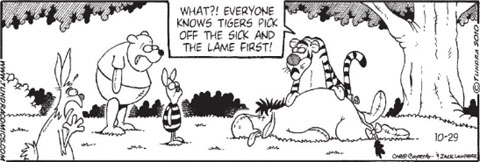
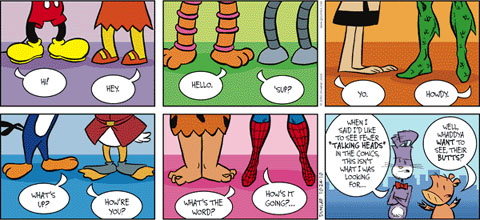

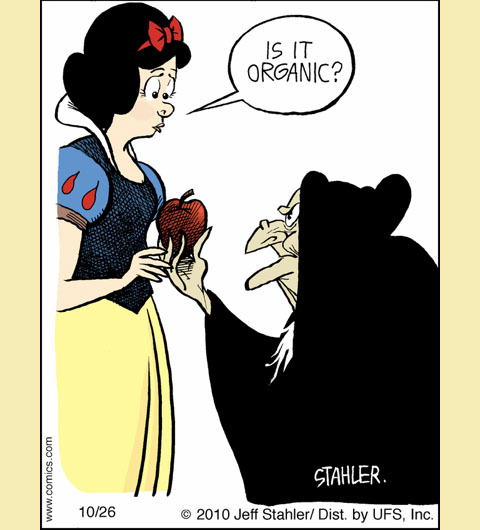
Medium Large (10/31) by Francesco Marciuliano; Tundra (10/29) by Chad Carpenter; Ink Pen (10/24) by Phil Dunlap; The New Yorker magazine cartoon (9/27) by Joe Dator; and Moderately Confused (10/26) by Jeff Stahler.
(Thanks to Jim Lahue)
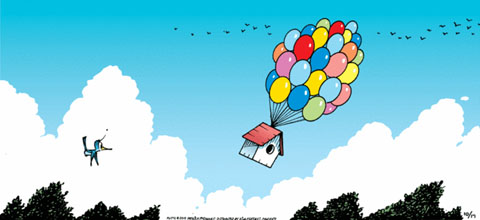

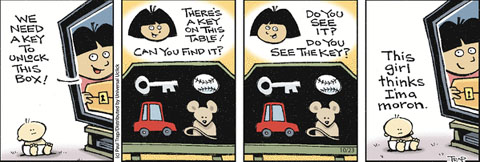
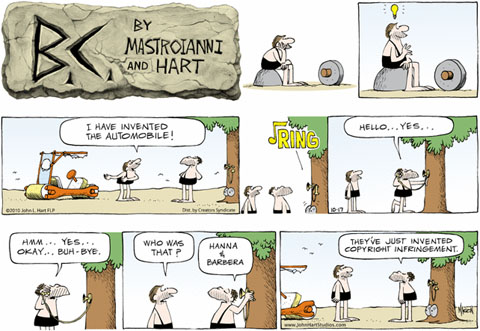
This week Mutts (10/17) by Patrick McDonnell; Medium Large (10/20) by Marciuliano; Thataboy (10/23) by Paul Trap; and BC (10/17) by Mastroianni and Hart.
(Thanks to Jim Lahue, Jed Martinez and the comic strip crew)


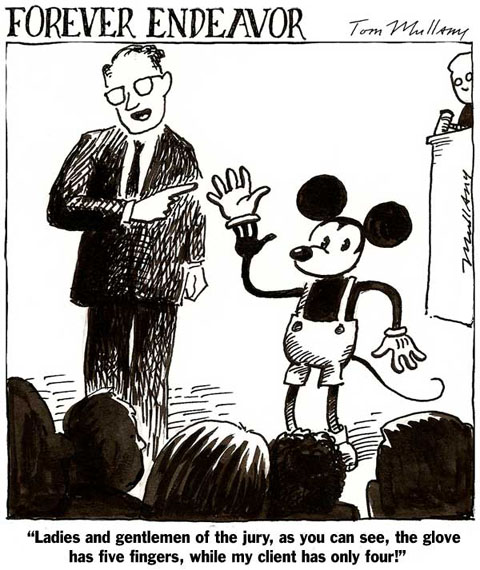
Rhymes With Orange (10/14) by Hilary Price; Sally Forth (10/13) by Greg Howard; and Forever Endeavor (10/14) by Tom Mullany.
(Thank you, Jim Lahue)



Brewster Rockit (10/7) by Tim Rickard; Brevity (10/5) by Guy and Rod; and Off The Mark (10/7) by Mark Parisi.
(Thanks to Jim Lahue and John Hall)
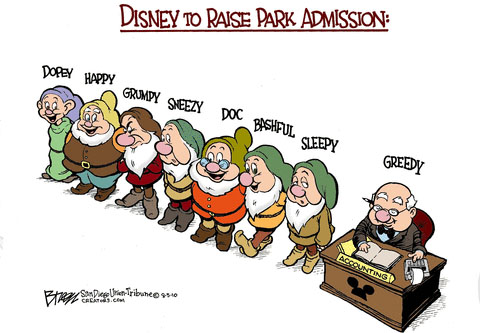
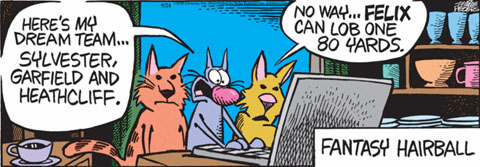

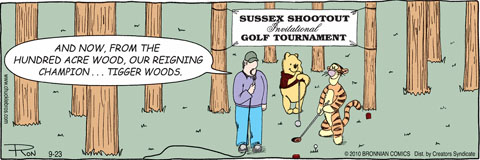

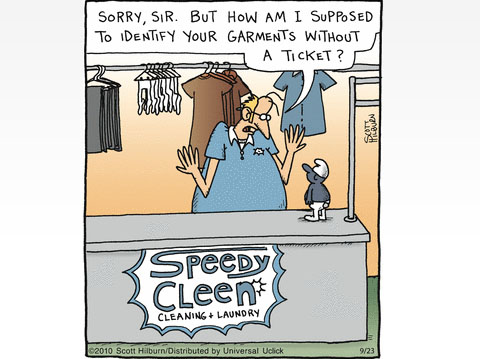
This week, from the top, a San Diego Union-Tribune editorial cartoon (9/3) by Steve Breen; Mother Goose and Grimm (9/24) by Mike Peters; Nancy (9/21) by Guy and Brad Gilchrist; Chuckle Bros. (9/23) by Brian and Ron Boychuck; Hari Kiwi (9/20) by Steven Degryse (aka “Lectrr”) and The Argyle Sweater (9/23) by Scott Hilburn.
(Thanks to Jim Lahue, John Hall, Ed Austin, Kurtis Findlay, Jed Martinez and Uncle Wayne)
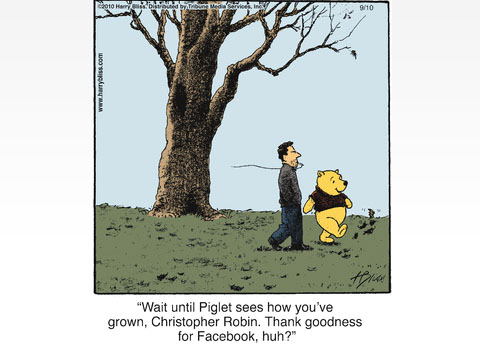
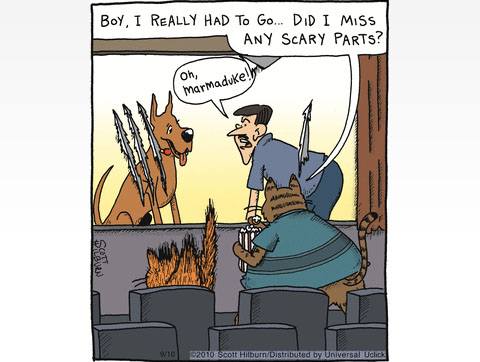
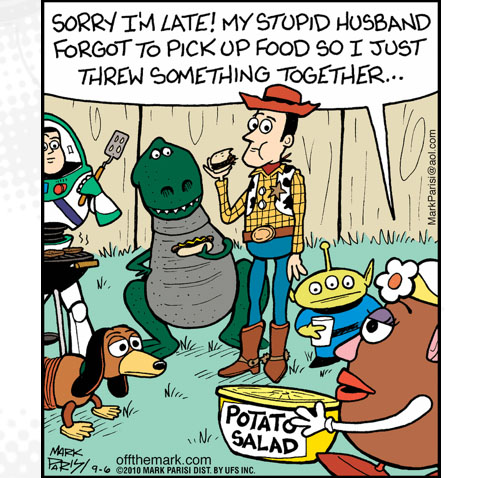
Bliss (9/10) by Harry Bliss; Argyle Sweater (9/10) by Scott Hilburn; and Off The Mark (9/6) by Mark Parisi.
(Thanks, Jim Lahue, Ed Austin and Kurtis Findlay)
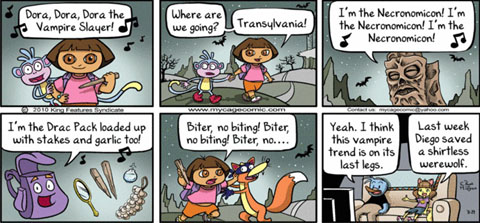
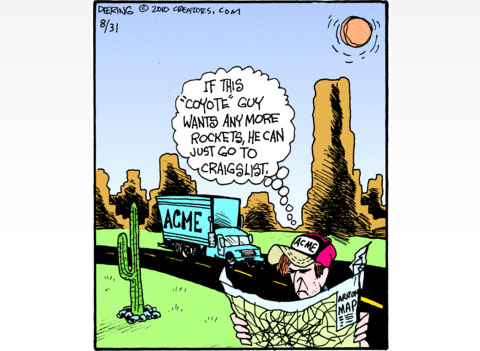
My Cage (8/19/10) by Ed Power and Melissa DeJesus ; and Strange Brew (08/31/10) By John Deering.
(Thanks, Jim Lahue)

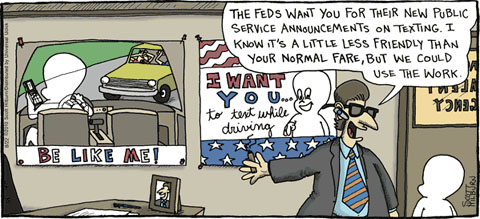

Slim pickings this week: Lio (8/26) by Mark Tatulli; The Argyle Sweater (8/22) by Scott Hilburn; and Reality Check (8/27) by Dave Whammond.
(Thank you Jim Lahue, Kurtis Findlay, Charles Brubaker and Ed Austin)


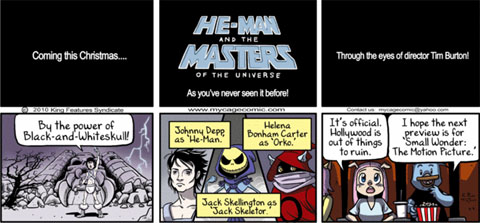
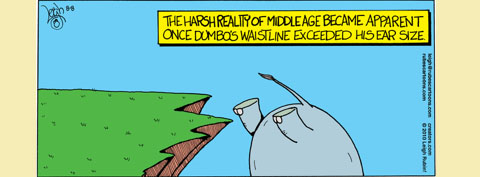
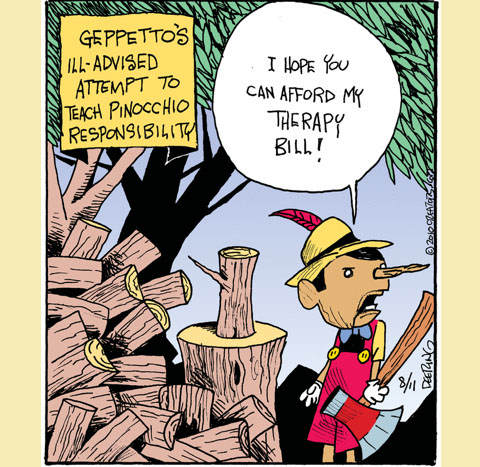
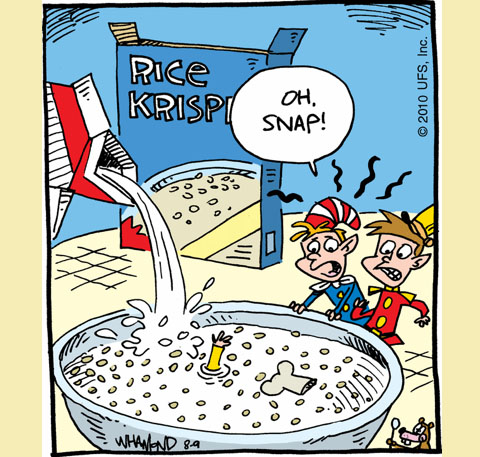
This week Beetle Bailey (8/11) by Mort Walker; Mallard Fillmore (8/9) by Bruce Tinsley; My Cage (8/8) by Ed Powers and Melissa DeJesus; Rubes (8/8) by Leigh Rubin; Strange Brew (8/11) by John Deering; and Reality Check (8/9) by Dave Whammond.
(Thanks, Jim Lahue, Kurtis Findlay and Ed Austin)


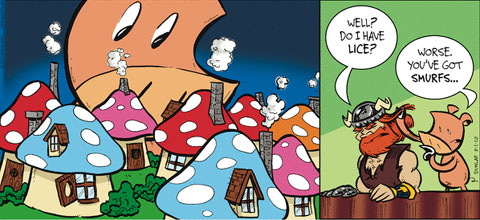
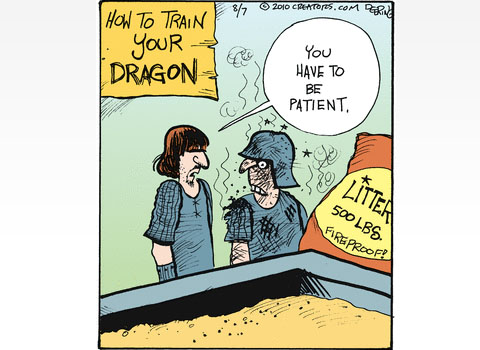
This week we start with the final strip of a two week Boris & Natasha storyline in Over the Hedge. It wrapped up on Friday (8/6) with this appearance by Mr. Peabody & Sherman (you can read the whole thing starting here). Following that, we have Cul De Sac (7/31) by Richard Thompson; Ink Pen (8/1) by Phil Dunlap; and Strange Brew (8/7) by John Deering.
(Thank you Jim Lahue, Charles Brubaker, Michael Tuttle and Mark Kausler)
View Next 2 Posts








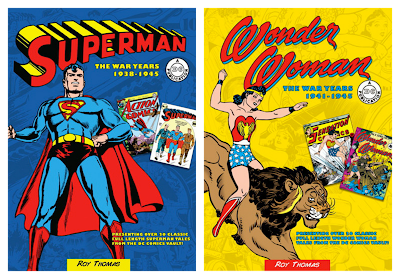



















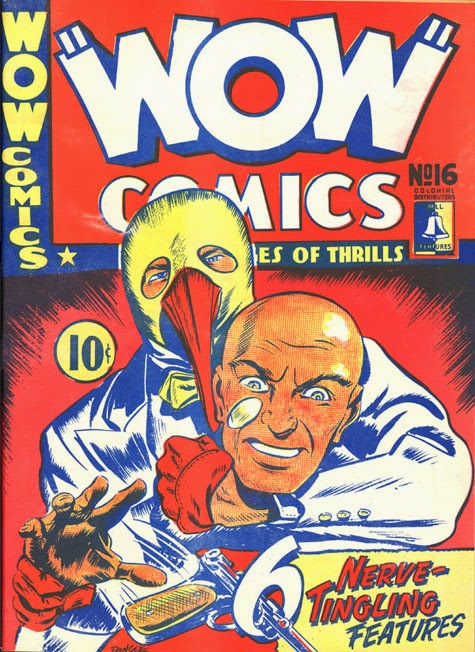



















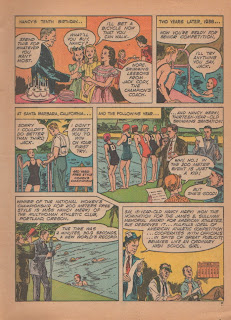





































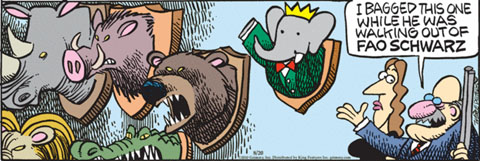

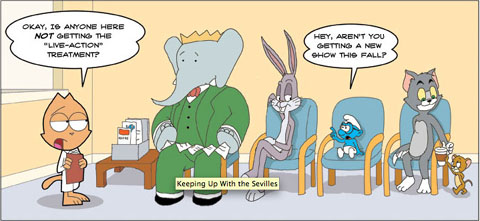
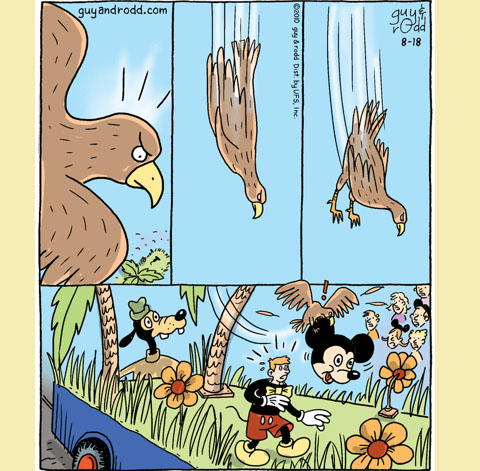

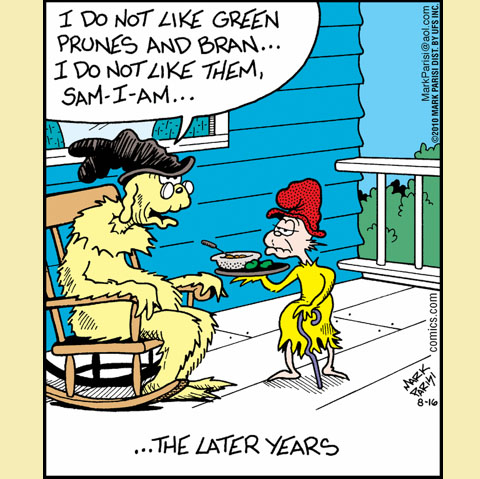
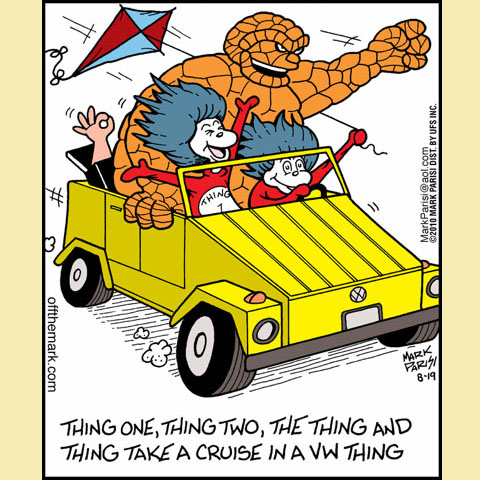










I had never heard of this magazine. Very interesting to see the comics and I am curious about Blue. Thanks for sharing.
~Jess
I think Calling All Girls stopped being published in the 1960s and then morphed in YM magazine. I hope you read Blue, it a interesting novel about a girl who gets polio in the 1940s, well written and researched.
Thanks, Alex for sharing Blue again.
Part of me thinks I read this Calling All Girls story on your blog before but another part doesn't remember this story at all so maybe I read another one. Anyway, I see (Wikipedia) that Nancy is still living and is only and hour or so from me! Wow! What to do with that? Maybe I'll send her a copy of Blue.
I know I didn't post this before, but you may have seen it while researching Blue. I definitely think you should try to get in touch with Nancy, what a great story that would be, wouldn't it. And yes, by all means, send a copy of Blue, after all, nothing ventured, nothing gained. But please, if you do decide to contact Nancy, let me know how it goes. Thanks.